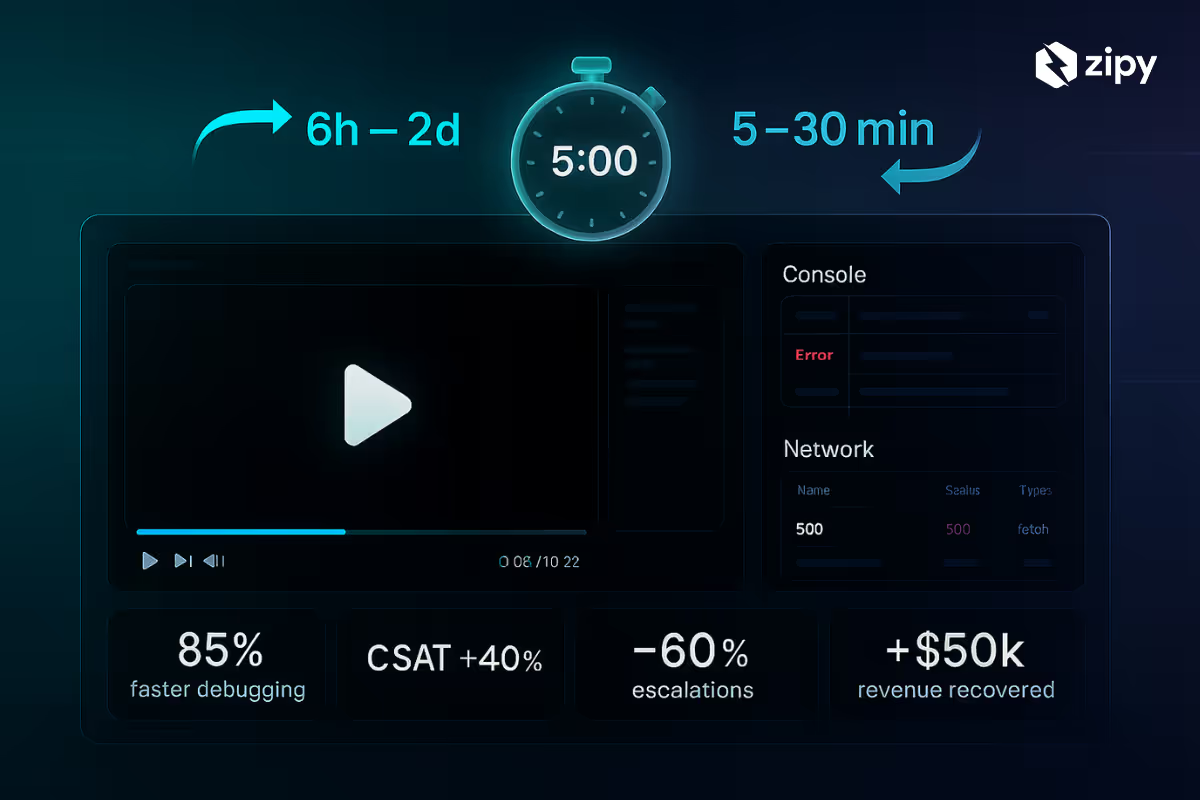Understanding the 208 Status Code
HTTP status codes play a crucial role in communication between web servers and clients, indicating the success or failure of a request. Among these codes, the 208 status code, titled "Already Reported," holds significance in certain scenarios. In this article, we delve into the intricacies of the 208 status code, exploring its meaning, use cases, implementation, best practices, and testing methodologies.
Catch HTTP Network errors proactively with Zipy. Sign up for free!
Try Zipy now
What is a 208 Status Code?
The 208 status code, "Already Reported," is part of the HTTP/1.1 standard. It signifies that the members of a DAV binding have already been enumerated in a preceding part of the (multistatus) response, and are not being included again.
What are the Possible Use Cases for 208 Status Code?
- WebDAV Servers: Web Distributed Authoring and Versioning (WebDAV) servers commonly use the 208 status code when handling collections or hierarchical resources. For instance, when a client requests a directory listing and the server has already provided the enumeration of directory contents, it responds with a 208 status code to indicate that the requested information has already been reported.
- Resource Synchronization: In scenarios involving synchronization of resources between the client and server, the 208 status code can indicate that the requested resource has already been processed or reported previously. This can help in optimizing data transfer and avoiding redundant operations.
How to Implement 208 Status Code in JavaScript
Implementing the 208 status code in JavaScript involves configuring the server to recognize and respond with this status when appropriate. Below is a basic example using Node.js and Express:
const express = require('express');
const app = express();
app.get('/resource', (req, res) => {
res.status(208).send('Resource already reported');
});
app.listen(3000, () => {
console.log('Server is running on port 3000');
});
Best Practices for Using 208 Status Code
When utilizing the 208 status code, it's essential to adhere to certain best practices to ensure effective communication between clients and servers:
- Consistency: Maintain consistency in using the 208 status code across your application to avoid confusion and ensure predictability in handling responses.
- Clear Documentation: Provide clear documentation for API endpoints that may return the 208 status code, explaining its meaning and the scenarios in which it is used.
How to Test 208 Status Code on Postman
In Postman, testing the 208 status code involves sending a request to an endpoint that is configured to respond with this status. Follow these steps:
- Open Postman and create a new request.
- Enter the URL of the endpoint configured to return the 208 status code.
- Send the request and observe the response status in the response panel. It should display "208 Already Reported."
How to Test 208 Status Code in DevTools Browser in Chrome
Testing the 208 status code in Chrome DevTools requires simulating a server response. Here's how to do it:
- Open Chrome DevTools by pressing F12 or right-clicking on a page and selecting "Inspect."
- Go to the "Network" tab.
- Click on "Offline" to simulate being offline.
- Send a request to an endpoint configured to return a 208 status code.
- Check the response status in the Network tab. It should show "208 Already Reported."
Debug and fix API errors with Zipy Error Monitoring.
Sign up for free
Frequently Asked Questions
Q: When should I use the 208 status code?
A: The 208 status code is primarily used in scenarios involving WebDAV servers or resource synchronization, where indicating that requested information has already been reported is necessary for efficient communication.
Q: Can the 208 status code be used in non-WebDAV contexts?
A: While the 208 status code is defined in the WebDAV specification, it can technically be used in other contexts where the concept of already reported information applies. However, such usage may not align with standard HTTP semantics.
Q: How does the 208 status code differ from other informational status codes?
A: Unlike other informational status codes (1xx), the 208 status code is not used for preliminary information but rather to indicate that the requested information has already been reported in a preceding part of the response.
Q: Is the 208 status code widely supported by browsers and servers?
A: Support for the 208 status code may vary among browsers and servers. It is essential to verify compatibility with your specific environment before relying on it in production.
Q: Can the 208 status code be used in conjunction with caching mechanisms?
A: While caching mechanisms can be employed alongside the 208 status code, it's crucial to ensure that cached responses accurately reflect the current state of the requested resources to prevent serving outdated information.
Conclusion
In conclusion, understanding the 208 status code is vital for web developers and IT professionals, especially those working with WebDAV servers or resource synchronization. By leveraging this status code appropriately, developers can enhance the efficiency of communication between clients and servers. For effective monitoring and handling of errors, including HTTP status codes, consider utilizing Zipy's comprehensive tool with session replay capabilities. Learn more about Zipy here.
Read more resources on 2xx status codes
- A comprehensive guide on HTTP Status Codes: All 63 explained
- The best HTTP Network log analysis tool | Zipy AI
- The Significance of the 200 OK HTTP Status Code
- Understanding the 201 Created HTTP Status Code
- Navigating the 202 Accepted HTTP Status Code
- 203 Non-Authoritative Info: What It Means - HTTP Status Code 203
- The 204 No Content Status Code Explained - HTTP Status Code 204
- The Role of the 205 Reset Content - HTTP Status Code 205
- How the 206 Partial Content Status Code Works - HTTP Status Code 206
- Exploring the 207 Multi-Status HTTP Response Code
- The 226 IM Used HTTP Status Code: An Overview
.svg)







.avif)



.webp)